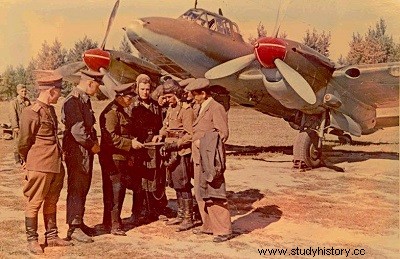
Even before the development of operations in the kyiv region, the enemy had advanced on the southern front, along the Black Sea coast, and by the beginning of August they were blockading the city on land and the port of Odessa. For more than two months, the defenders of Odessa repelled an enemy more than five times outnumbered—the Romanian Fourth Army reinforced by German units. The sailors of the Black Sea particularly distinguished themselves during these battles. Enemy soldiers had given the nickname "black cloud" to the Soviet marine infantry, whose uniform was black. And it was only the risk of the Crimea being conquered by the Germans that forced the high command to give the order to abandon Odessa. The city was evacuated on October 16.
But the enemy had entered the Crimea and at the beginning of November they blockaded, on the land side, Sevastopol, the main base of the fleet of the black Sea. The siege of Sevastopol, which was to last 250 days and cause enormous losses to the German 11th Army, began.
... Autumn had arrived. What was the outcome of the first three months of the German offensive in the east?
The Germans had seized an immense territory, they were at the gates of Leningrad, occupied Smolensk, kyiv , held important industrial and agricultural regions of Ukraine. But the fundamental objectives of the “Barbaroussa” plan had not been achieved. The "blitzkrieg" plan had collapsed, the Germans had failed to destroy the Soviet army or dismember the U.S.S.R. — whom they called “a colossus with feet of clay” — in a short time. The surprise factor, used by the Germans to attack the USSR, no longer worked; new factors came into play. Among these, the economic and moral potential of the belligerents occupied an essential place.
